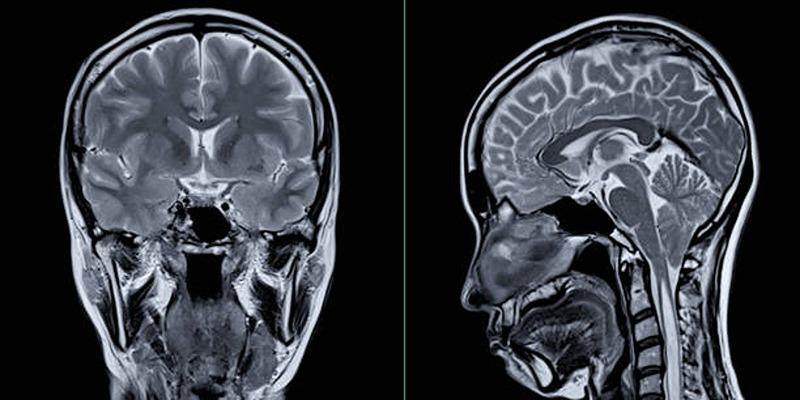What Is CTE? Exploring the Link Between Brain Trauma and Concussions
CTE represents a neurodegenerative brain disease which develops due to repeated blows to the head and instances of concussion. CTE exists widely in contact sports athletes and military veterans along with people who have suffered multiple brain traumas which has led medical and scientific research to focus on this condition intensely. CTE develops as brain tissue deteriorates gradually throughout time while causing memory trouble alongside emotional volatility and mental impairment and erratic conduct diminishes gradually.
Understanding CTE: A Progressive Brain Disorder
Chronic Traumatic Encephalopathy (CTE) is a neurodegenerative disease triggered by repeated head trauma, leading to the buildup of an abnormal protein called tau in the brain. These tau proteins form clumps that disrupt normal brain function, gradually damaging neurons and impairing cognitive, emotional, and physical abilities.
Unlike a single concussion, which can often heal with proper care, CTE develops over years of repetitive brain injuries, posing a serious risk to individuals in high-impact professions or activities. CTE was first recognized in the 1920s among boxers, where it was known as "punch-drunk syndrome."
Since then, modern research has significantly broadened our understanding of the condition, linking it to athletes in contact sports such as football, hockey, and soccer, as well as military veterans exposed to blast-related injuries. This expanded knowledge highlights the long-term dangers of cumulative brain trauma and underscores the importance of prevention and awareness.
Symptoms of CTE:
Chronic Traumatic Encephalopathy (CTE) symptoms often emerge years—sometimes even decades—after the initial head trauma, making early diagnosis particularly difficult. Symptoms are generally divided into four stages, each reflecting a worsening progression of the condition:
- Stage 1: Early signs include mild headaches, trouble concentrating, and short-term memory issues.
- Stage 2: Symptoms escalate to mood swings, depression, impulsive behavior, and worsening memory problems.
- Stage 3: Cognitive abilities begin to decline significantly, leading to confusion, poor judgment, and difficulties with speech and motor skills.
- Stage 4: The final stage is marked by severe dementia, aggression, paranoia, and profound motor dysfunction.
It’s important to recognize that CTE symptoms can vary greatly between individuals, and not everyone with a history of head trauma will develop the condition.
Causes and Risk Factors:

Chronic Traumatic Encephalopathy (CTE) is a progressive brain condition primarily caused by repetitive brain trauma. This includes both concussions—head injuries that result in immediate symptoms such as dizziness, confusion, or loss of consciousness—and subconcussive impacts, which may not cause noticeable symptoms but can still inflict cumulative, long-term damage on the brain over time. The repeated nature of these injuries disrupts normal brain function and can lead to the buildup of abnormal proteins, ultimately affecting cognition, mood, and behavior.
Certain activities, careers, and life situations carry a heightened risk of experiencing such injuries:
Contact Sports:
Athletes involved in sports like football, boxing, hockey, rugby, and soccer are among the most vulnerable to CTE. Frequent head impacts, whether from tackles, falls, or collisions, make these activities significant contributors to repetitive brain trauma. Even young athletes in high school or college sports may face risks that compound over years of play.
Military Service:
Members of the armed forces, particularly those exposed to explosive blasts or combat-related head injuries, face an elevated risk of developing CTE. The concussive force from blasts can affect the brain even without direct physical contact, and prolonged exposure to such environments increases the likelihood of lasting damage.
Physical Abuse:
Survivors of domestic violence or other forms are also at risk. Continuous head injuries over time can have devastating effects, particularly for those who are unable to seek medical attention or are exposed to trauma for prolonged periods.
Although not everyone exposed to repetitive brain trauma will develop CTE, certain factors can increase susceptibility. These include genetic predisposition, the frequency and severity of injuries, and the age at which the trauma occurs.
Diagnosing CTE: Challenges and Advances
Current research focuses on advanced imaging technologies and biomarkers to detect the disease in its earliest stages. One particularly promising area is positron emission tomography (PET) scanning, which enables scientists to visualize tau protein buildup in the brain.
While these techniques are still under development and not yet widely available, they offer immense potential for earlier diagnosis and intervention. For patients and their families, this progress brings the hope of improved outcomes and a better understanding of this challenging condition.
Preventing and Managing CTE:

Preventing Chronic Traumatic Encephalopathy (CTE) requires a proactive and strategic approach centered on minimizing head injuries and addressing their long-term impact. Here are key strategies to tackle this pressing issue:
1. Enhanced Safety Protocols
To reduce head trauma, sports organizations and military institutions are implementing stricter safety measures. These include limiting full-contact practices and utilizing advanced protective equipment designed to significantly lower the risk of injury.
2. Education and Awareness
Creating awareness among athletes, coaches, and parents is critical. Understanding the risks of repeated head injuries and recognizing early symptoms can help prevent long-term damage. Empowering individuals with knowledge fosters safer practices and better prevention.
3. Prompt Medical Attention
Timely and adequate medical care is essential for managing head injuries. Anyone who suffers a concussion should seek immediate medical evaluation and follow a structured recovery plan to protect long-term brain health and prevent further complications.
The Future of CTE Research:
The field of CTE research is advancing rapidly, driven by scientists dedicated to unraveling the complexities of this disease and discovering effective treatments. Key areas of focus include:
- Biomarker Development: Identifying biological markers to enable the detection of CTE in living patients.
- Therapeutic Innovations: Investigating medications and therapies aimed at reducing tau protein buildup and brain inflammation.
- Genetic Research: Exploring genetic factors that may influence an individual’s vulnerability to CTE.
- Policy Advocacy: Championing policy changes to better protect those at risk of repetitive head injuries.
Conclusion:
Chronic Traumatic Encephalopathy (CTE) is a serious and multifaceted condition that highlights the critical need to protect brain health. While there is still much to uncover about CTE, the connection between repetitive brain trauma and its lasting effects is well-established. By prioritizing safety measures, fostering research advancements, and increasing public awareness, we can work to reduce the incidence of CTE and provide better support for those affected by this challenging condition.











